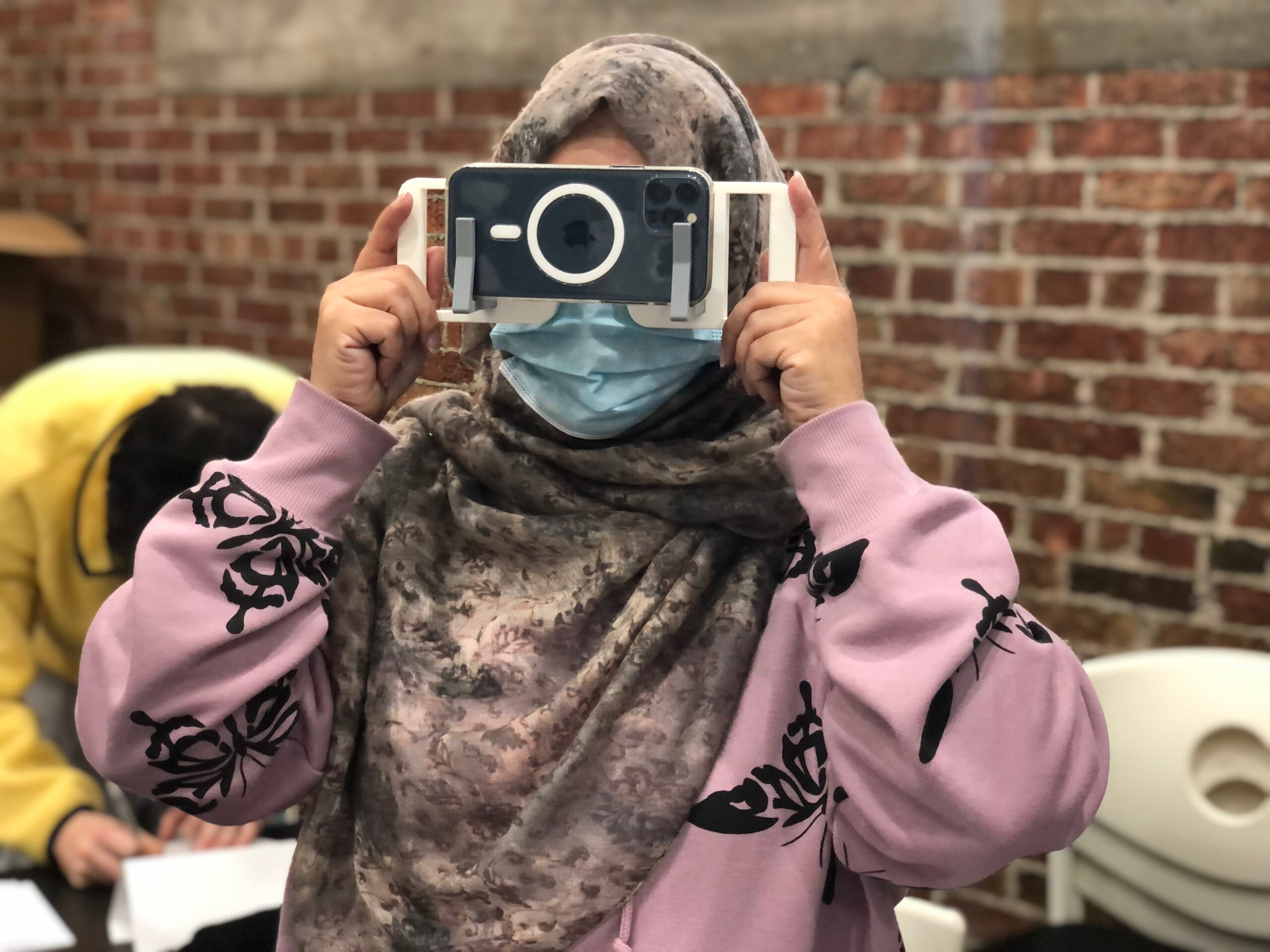
Since 2019, Assistant Professor Milad Mozari from the division Multi-Disciplinary Design (MDD) at the U’s College of Architecture and Planning, has worked with the Bennion Center and the International Rescue Committee (IRC in Salt Lake City) using technology to help the refugee community in their resettlement process in Utah.
More than 70 students from the MDD program have participated in this innovation hub called ‘Bridging the Gap,’ an initiative that has become a collaborative space where immigrants and refugees, that have historically experienced inequity in technological access, now discover ways to increase their digital literacy.
Working with children, peers, adults, and the elderly, each semester students collaborate with IRC Clients on different emerging technology such as Virtual Reality (VR).
“We learned that some people are hesitant to leave their house when they settle in a new country,” said Mozari. “Our clients come from war-stricken countries and have faced traumatic experiences, so we don’t want them to feel triggered in a new immediate environment. The VR experience is a solution, and that is why it is a positive addition to be integrated into their cultural orientation system.”
Bridging the Gap has helped multi-disciplinary design students think thoughtfully and use technology to teach many things that can seem implied for locals but completely different for others, culturally speaking. Using their skills in design—applying graphics, and mainly with no language, students let clients from various nations experiment with day-to-day situations like visiting the library, shopping at the grocery store, the use of trails, and how to take the bus.
Real experience
Students start their work in class, developing the realities (360o videos). Then, they attend weekly cultural orientations to work with refugees from Western Africa, the Middle East, and South and Southeast Asia to receive feedback from their clients.
“My group filmed a series of videos that captured what we called Basic Needs: Transactions,” said Mya Nguyen, a Junior student in the MDD program. “We focused on the grocery store virtual reality learning module, as that was the service we felt would be most utilized by incoming clients. As a first-generation American on my dad’s side, shopping at Vietnamese grocery stores as a kid is a fond memory that bonded me to his culture. I wanted to incorporate a semblance of cultural integration, rather than assimilation into my orientation video, to allow those seeking refuge to feel a connection to their personal existing cultures.”
Collaboration
The University of Utah Bennion Center’s mission is to inspire and mobilize people to strengthen communities through learning and advocacy, goals that align with every Bridging the Gap project component.
“Professor Mozari’s project connects refugee communities, U of U students, and faculty in deeply engaged learning experiences that have positive impacts on all,” said Amy Sibul, associate director for Curriculum & Scholarship at the Bennion Center. “The innovation hub he has built at the IRC in Salt Lake City to support digital access and tech literacy among Utah’s refugee populations is an incredible resource and an exemplary example of culturally relevant Community Engaged Learning.”
For the IRC in Salt Lake City, the project has been key for participants in their adaptation to the American culture.
“The digital divide is one of the many challenges facing refugees and New Americans (R&NA) communities striving for full social, economic, and civic integration,” said Krysti Nellermoe, education program manager of the IRC in Salt Lake City. “In partnership with the class, our program has been able to create supplemental Virtual Reality educational modules to prepare new students and their parents for the atmosphere of an American school, helping students and caregivers feel more comfortable navigating the U.S. school system.”
Participants can access the modules on their smartphones during the cultural orientations for newly resettled refugees, increasing the engagement and enjoyment of the training.
“We’re engaging the community in what we’re learning,” said Mozari. “We are introducing technology to students and new neighbors, sharing it with our community collaboratively, to do something meaningful and shorten the existing gap to emerging technology.”
The Bridging the Gap team is currently working on the next stage of the project, which comprises designing VR kits that IRC in Salt Lake City clients can take home to continue their learning experience. If you are interested in supporting the program, please contact Milad Mozari at milad@design.utah.edu.